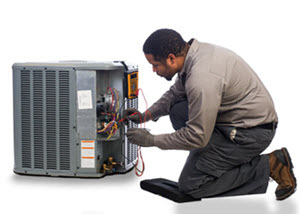HVAC (Heating, Ventilation, and Air Conditioning) techniques consist of assorted parts that work collectively to offer heating, cooling, air flow, and management of indoor air high quality. Here are the main elements that make up an HVAC system:
1. Thermostat:
The thermostat is a management device that allows customers to set the desired indoor temperature. Modern thermostats could be programmable or sensible, permitting for precise management and power savings.
2. Furnace:
A furnace is a heating component that generates heat and warms the air. It can run on varied fuels corresponding to natural gasoline, oil, or electricity. The heated air is then distributed all through the building.
3. Heat Exchanger:
In a furnace, the heat exchanger is a vital element that transfers heat from the combustion course of to the air. It ensures that the combustion gases don't combine with the indoor air.
4. Evaporator Coil:
The evaporator coil is a half of the indoor unit in air conditioning systems. It cools and dehumidifies the indoor air by absorbing heat. Warm indoor air passes over the evaporator coil, and the refrigerant inside the coil absorbs the heat, cooling the air.
5. Condenser Coil:
The condenser coil is a half of the out of doors unit in air con systems. It releases the heat absorbed by the refrigerant indoors into the outside air. The refrigerant releases the warmth as it modifications from a high-pressure gas to a liquid.
6. Compressor:
The compressor is an important part of the refrigeration cycle. It pressurizes the refrigerant gasoline, raising its temperature. This high-temperature, high-pressure gasoline is then condensed into a liquid by the condenser coil.
7. Refrigerant Lines:
Refrigerant traces join the indoor and outside units, allowing the refrigerant to circulate between the evaporator and condenser coils. These lines are essential for the warmth change process.
8. Ductwork:
Ductwork consists of a community of pipes or channels used to distribute heated or cooled air from the HVAC system to totally different rooms within a constructing. Properly designed and sealed ducts are crucial for environment friendly air distribution.
9. Air Handler:
The air handler is a part of the indoor unit and is liable for circulating conditioned air throughout the constructing. It accommodates the blower, filter racks, and typically the evaporator coil.
10. Vents and Registers:
Vents and registers are openings in partitions, ceilings, or flooring the place air is equipped or returned to the HVAC system. Supply vents distribute conditioned air into rooms, whereas return vents draw air back into the system for reconditioning.
11. Fan:
The fan is responsible for shifting air via the HVAC system. In heating mode, it distributes warm air generated by the furnace or warmth pump. In cooling Best HVAC companies , it circulates cool air from the air conditioner.
12. Air Filters:
Air filters remove dust, pollen, and other particles from the air, ensuring better indoor air quality and stopping particles from entering the HVAC system's elements.
13. Dampers:
Dampers are adjustable plates within the ductwork that control the circulate of air. They could be adjusted to stability airflow and control temperature distribution in numerous areas of the constructing.

14. Humidifier/Dehumidifier:
Humidifiers add moisture to the air in dry environments, improving indoor consolation. Dehumidifiers take away extra moisture, especially in humid climates, preventing points like mould progress and bettering indoor air high quality.
15. Thermal Expansion Valve (TXV) or Expansion Device:
This valve regulates the move of refrigerant into the evaporator coil, permitting the refrigerant to expand and cool quickly, preparing it for the next cycle.
Proper design, set up, and upkeep of these components are important for the efficient and dependable operation of an HVAC system. Regular upkeep, including cleansing or replacing filters, checking refrigerant ranges, and inspecting ductwork, is essential to make sure the system's longevity and energy efficiency..
